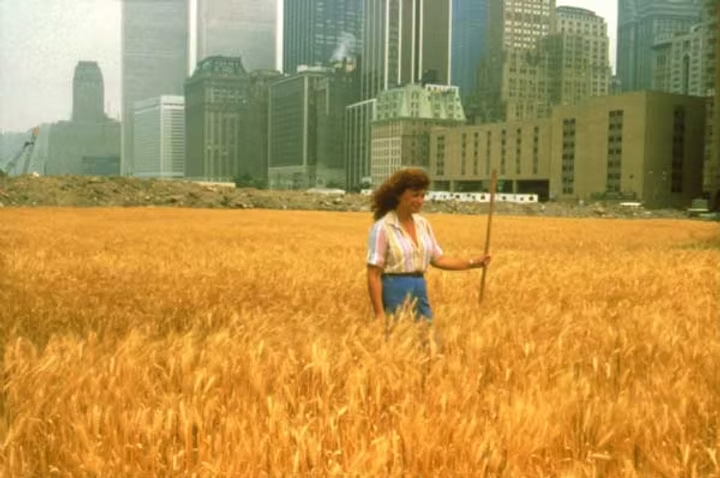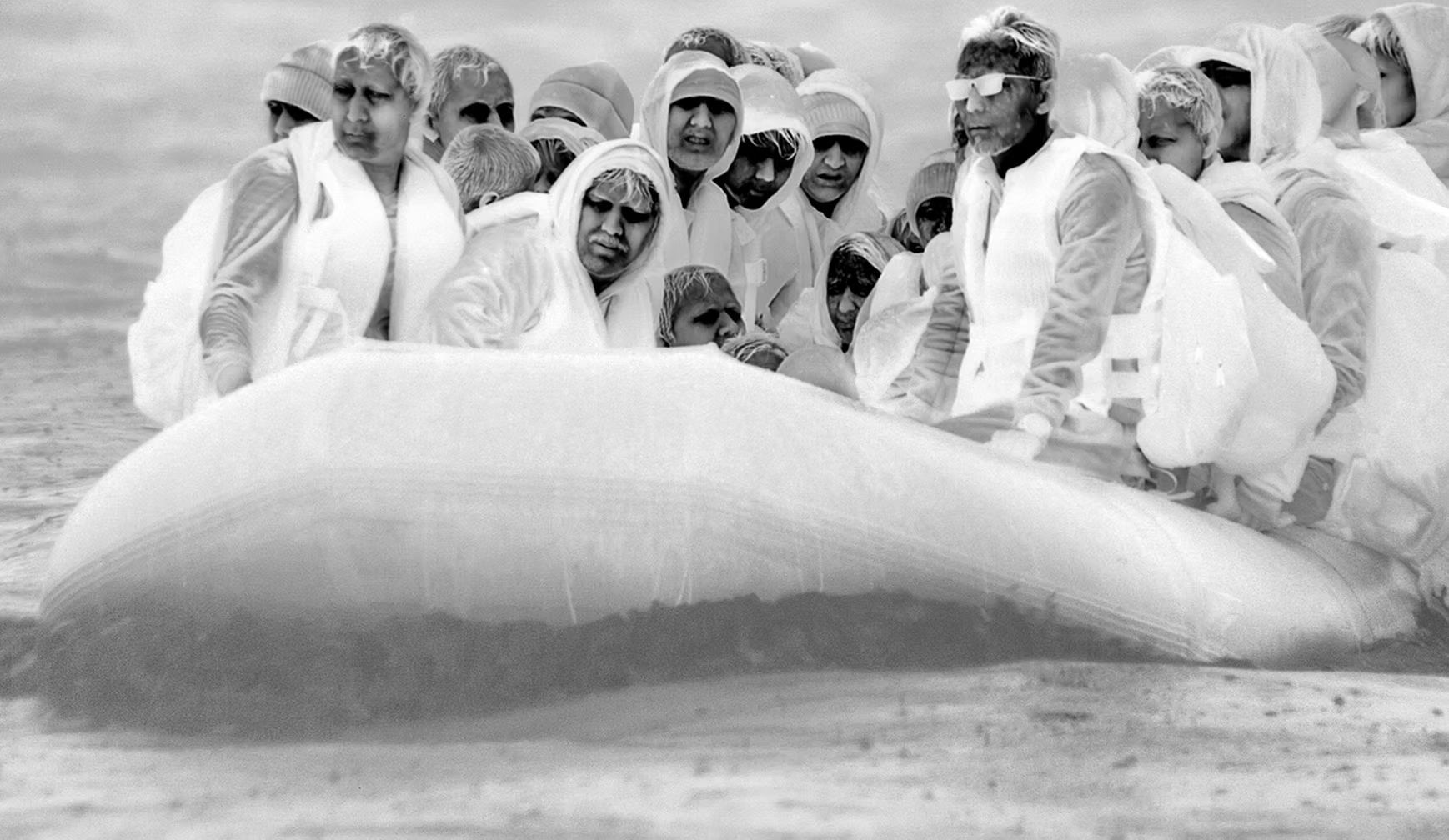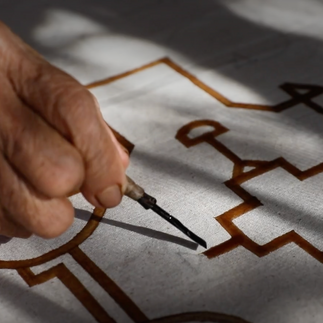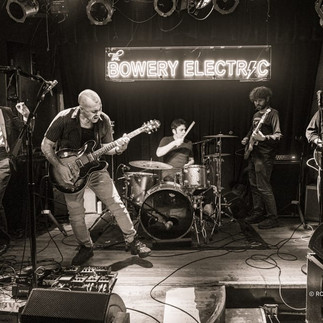What About Quantum? It's Dreaming, Blending, and Entangling With Humanity–by Nina Colosi
- Mar 8
- 13 min read
Updated: May 27
of Change (excerpt): a poetic drifting and leaping into the quantum realm. Music and film by Nina Colosi (5:00) Premiering late 2025. Cedar Lake Contemporary Ballet, NYC. Choreographer, Benoit-Swan Pouffer. Dance video, Adam Larsen. Creative editor, David Bates, Jr.. Poetic elements co-created with ChatGPT4; response to human dance with Sora. The music is based on a restructured version of the 12-tone note system created by composer Arnold Schoenberg in the early 20th-century. The film integrates composer John Cage and choreographer Merce Cunningham's collaboration in indeterminacy form (1950-1970s) also found in principles of quantum mechanics.
But First, What About Artificial Intelligence?
AI is rapidly expanding across industries and daily life, performing complex computations and analyses with data aggregated from public datasets, user inputs, sensors, and the internet. It has the potential to transform economies, healthcare, corporations, societies, sciences, and geopolitics in ways that cannot yet be predicted, and is evolving faster than the ability to regulate and govern it. Corporations are looking for models to encourage the use of AI within their organizations. (1) Emerging technologies like Artificial General Intelligence, quantum computing, fusion energy, and genetic engineering will further reshape humanity in unforeseen ways. The unprecedented advancements that could result from powerful alliances of technologies, peoples, and ideas around the world remain largely untapped—held back by a world shaped by deeply rooted divisions.

Breakthroughs in deep learning are dramatically expanding creative possibilities for all artists. Technologies like ChatGPT, DALL·E, Midjourney, and Stable Diffusion, along with the introduction of updates and new creative tools, are evolving at a rapid pace. However, artificial intelligence concepts have influenced the arts for decades, and the use of mathematical and algorithmic principles in art has existed in cultures around the world since ancient times. (2)
Art in all eras reflects media theorist Marshall McLuhan states in Understanding Media (1964) that "Art as radar acts as 'an early alarm system,' enabling us to discover social and psychic targets in lots of time to prepare to cope with them. This concept of the arts as prophetic contrasts with the popular idea of them as mere self-expression." McLuhan's words resonate with the AI-generated art showcased globally by leading professionals at cultural centers and art labs. Among them are: Christiane Paul, Curator of Digital Art at the Whitney Museum, New York City; Dooeun Choi, Director of Hyundai ArtLab, Seoul; Alain Thibault, Artistic Director of Elektra and composer, Montreal; Rasa Smite and Raitis Smits, artists and Co-founders of RIXC Center for New Media Culture, Riga; and many others. The auction house Christies in New York City, produced Augmented Intelligence, the first-ever sale dedicated to AI-generated art. Corporations that are looking for models to encourage the use of AI within their organizations may well find them in artworks that are co-created with AI in groundbreaking ways.
Technopoet Sasha Stiles offers the following insights about creating with AI, reflecting on the historical precedents that mark this watershed moment.

Image: Artwork from Cursive Binaries by Sasha Stiles, artist and writer of poetry in collaboration with an AI alter ego, exploring poetry's role as humanity's most ancient and enduring technology.
Why do we equate AI with robots and machines instead of constellations, libraries, forests or mycelial networks?
Why do we view AI solely as futurism instead of an accretion of histories? What if it's not an intelligence but a literacy, a new way of reading the world. What if it's not an intelligence, but an instrument--as in violin, piano, something to be played, something that sings? Instrument as in telescope, microscope, X-ray, something that reveals, magnifies, extends perception? What's artificial about the raw material of human language, labor and longing? Why do we call it invention or innovation, not evolution? -- Sasha Stiles
What About Quantum?

An entirely new kind of computing--one that may solve problems in minutes that would take today’s supercomputers millions of years to accomplish, is being developed at IBM, Google, Microsoft, and other companies. Quantum computers have potential to give answers to impossible problems in physics, chemistry, engineering and medicine, and drive scientific breakthroughs in health and well-being. It pushes the limits of knowledge with a processor that computes with the atomic forces that created the universe.

Unlike classical computers that operate with 0s and 1s, quantum computers use Q-bits (quantum bits) that see data from all angles. They operate in extreme cold, so it is one of the coldest places in the universe, nearly 460 degrees below zero Fahrenheit, which reduces electrical resistance and protects against external vibrations.
Quantum mechanics involve phenomena like superposition and entanglement, where particles can exist in multiple states at once and their behaviors are interconnected regardless of distance. Quantum mechanics involves chance, probability, and non-linearity, creating ever-changing, non-deterministic realities which are often mirrored in the arts.

The expanding exploration of quantum mechanics is evident in awards and programs in the sciences and a broad range of international organizations, such as The Nobel Prize in Physics given to Alain Aspect, John Clauser, and Anton Zeilinger in 2022, and the UNESCO International Year of Quantum Science and Technology in 2025, and many others. And there is growing global interest in how deeply intertwined quantum technology and creative expression are becoming, although historically, the qualities of quantum have been present in arts concepts in many ways. The expanding explorations of quantum and art can be experienced at international art labs, exhibitions, and programs such as The Quantum Information Center and Quantum Studio residency at the Sorbonne University, Paris; Yale Quantum Institute, New Haven; Goethe Institute Studio Quantum, Berlin, and their collaboration in the program Dreaming Quantum Futures at Somerset House, London, in partnership with ARTS at CERN.

Refik Anadol, Quantum Memories Probability (2021). Video (color, sound), projector or LED wall. Dimensions variable 16 min, loop. Edition of 3, 2 AP.. Courtesy of bitforms gallery, NYC.
Anadol's Quantum Memories series was created in collaboration with AI-driven generative algorithms and quantum computing that leverages subatomic physics. The series captures humanity's drive to explore spaces beyond our reach, including the mind's inner realms and subconscious. The series speculates on accessing invisible spaces, created in collaboration with AI-driven generative algorithms and quantum computing, a technology that leverages subatomic physics. By transforming visual data into art, the series represents our collective, digitized memories of nature and the future potential of this technology in art, design, and architecture. Anadol's art is featured in Centerpoint Now publication marking the 75th anniversary of the UN, co-produced by Streaming Museum and WCPUN.

superposition (2014) is among the quantum related works by internationally renowned electronic artist Ryoji Ikeda. The work is about the way we understand the reality of nature on an atomic scale that is inspired by the mathematical notions of quantum mechanics. Performers appear as operator / conductor / observer / examiners. All the components on stage are in a state of superposition; sound, visuals, physical phenomena, mathematical concepts, human behaviour and randomness, that are constantly orchestrated and de-orchestrated simultaneously in a single performance piece. Ryoji Ikeda's test pattern [times square] video by Streaming Museum.
Considering its evolving capability to harness atomic forces that created the universe, can quantum computing, in collaboration with other technologies and specialists, uncover solutions to global challenges that are beyond human comprehension and capabilities?

How is it that a species that has evolved to the point where it can ponder the universe and infinity still remains preoccupied with animal instincts that no longer serve it? - Astronaut Ron Garan
How will the computational powers of these technologies process the destructive forces and cultural energies that artists have expressed throughout history and 'learn' about human consciousness and behavior?
Artworks previously featured in Streaming Museum programs:
L-R: Artemisia Gentileschi, Judith Beheading Holofernes (c.1620) depicts heroic sisterhood and power against tyranny; Zorawar Sidhu and Rob Swainston, August 25, 2021 from Doomscrolling series, captures social unrest conveying the conflicts of ideologies and physical violence; Agnes Denes, Wheatfield — A Confrontation (1982) in view of the World Trade Center, protests against global warming and economic disparity.
L-R: Francisco Goya, The 3rd of May 1808 (1814), the execution of Madrid patriots by Napoleon’s forces; Richard Mosse, Incoming #96 (2016), still from Incoming series on mass migration and human displacement unfolding across Europe, the Middle East and North Africa; James Nachtwey, Struggle to Live--the fight against TB (early 2000s) one of world’s greatest photojournalists covers the most critical social problems.
L-R: Tivadar Domaniczky, Basetrack media project covering the Afghanistan war with Teru Kuwayama and Balazs Gardi (2010-11); Oscar Howe, Wounded Knee Massacre (1960), modernist interpretations of Native American history; Chris Rainier, acclaimed documentary photographer, Woman and Child (2008) in Palizi village, Arunachal Pradesh.
Along with art's expression of humanitarian and environmental issues, I think about the impact of, say, psychoanalysis on the arts throughout the 20th century. Or how space travel and celestial discoveries made their way into tales of science fiction, horror, and fantasy in the arts. Artists have always responded to the world around us, including the breakthroughs that are happening in the realm of scientific thought and discovery.
Can the collaboration between quantum, other technologies, the arts, and experts from various fields--such as psychology, sociology, anthropology, and neuroscience--provide and coordinate their different perspectives on what drives human behavior and how it can be understood? Can this drive solutions for society's vast inequities, misguided leadership, and reimagine what governments can do to evolve their systems? (3) While brilliant scientists and technologists continue to produce extraordinary breakthroughs in their fields, humanity’s immense sustainability challenges are seemingly beyond human capabilities and determination to solve. Can quantum thinking help?
Dream States in Quantum and the Arts: Imagining Possible Futures
Quantum computing, the creative process of artists, and dreaming share fascinating similarities. Quantum concepts like superposition and entanglement, and the way dreams can blend different realities and ideas at once, closely mirror an artist’s creative flow. Similarly, quantum tunneling, where particles pass through barriers, reflects how dreamers and artists move between ideas or scenes without a clear path, exploring unexpected realms. Creative solutions and ideas can emerge from this realm of free flowing thought. Astronaut Nicole Stott, who has felt the powers of the universe through her experience of seeing earth in space says that "art is the ultimate universal communicator of complex ideas" and can help people understand realities of life on earth. Can the dream states in the arts and quantum mechanics together provide new ways to imagine possible futures?

Libby Heaney, Grasping Fog, 2024. (detail). Watercolour and pencil on paper. 76-x-57cm. Artist and quantum physicist, Libby Heaney, highlights in her art the conceptual similarities between quantum mechanics, the process of artistic creation and their relation to dreaming.
Philip K. Dick’s 1968 science fiction novel Do Androids Dream of Electric Sheep? explores themes related to the conceptual overlap between quantum computing and human dreaming. The narrative delves into the blurred lines between artificial and human consciousness, suggesting that dreaming and memory may not be exclusively human traits. The novel was the basis for Ridley Scott’s 1982 film Blade Runner, and its 2017 sequel.
Humanness Injections into AI and Quantum Systems
It’s interesting to imagine future artworks made solely by Quantum and AI processes that blend combinations of humanistic elements and the creative expression of planetary data that are stored within their databanks. How would these supercomputers comprehend and transform the ideas of painting, sculpting, design, performing arts, photography, video, digital arts—and the process of their shaping by human hands, bodies, minds, the wide range of emotions and their creative tools? Will the data on art of the past inject humanness into the future, and how will it become part of the inevitable transformation of life and thought into new forms? What will the resulting 'supercomputed' art reveal about the collective world brain? Will media theorist Marshall McLuhan's words from 1964 be relevant in the distant future as an ‘early alarm system,’ helping the evolved human form to identify and prepare for social and psychic shifts well in advance?
Visual and performing artists previously featured in Streaming Museum programs:
L-R: David Boring, rock band, Hong Kong; Jean Miotte painter in "Art L'Informal" style of gestural spontaneity of post WWII period in France; Sara Flores artist in the Shipibo-Konibo region of the Peruvian Amazon.
L-R: Manicburg rock band, New York; Cedar Lake Contemporary Ballet New York, dance video toured internationally; Chris Rainier, documentary photographer Maasai Fire Dance, near Olduvai, Tanzania.
Taka Kigawa, pianist, performed Beethoven’s Ode to Joy for the 20th anniversary of Fall of The Berlin Wall concert, Chelsea Art Museum, NYC; Ken Are Bongo, filmmaker, dance in Sami culture, Norway for Nordic Outbreak global tour, Jacob TV composer, Netherlands, reality opera The News at The Met.
A Duet by a Classical Violinist and Quantum Particles
Cloud Chamber, A Duet for Violin and Subatomic Particles by Alexis Kirke, performed by violinist Alina Polonskaya was developed at the Interdisciplinary Centre for Computer Music Research, Plymouth University, UK. Kirke composed music and developed specialized software and hardware to make interactions between musician and quantum particles visible and audible. Not only did the particles influence and create sound, but the accompanying solo violin directly or indirectly influenced the particles physically. This two-way process used cosmic rays entering a glass chamber, saturated with ethanol and cooled by liquid nitrogen, making the particles in the cosmic radiation visible in real time. My Life in Quantum Computer Music by Alexis Kirke.

Energies and Entanglements in Human Arts and Quantum Processes
Lev Manovich, internationally acclaimed media historian and artist working with generative AI, has given me his views on my classical music background, and the greatness of classical music training. "I often feel that many people in "digital art" today don't have much knowledge of other arts, or classical traditions, and this limits their thinking and results. Unfortunately, I never studied music, but in the last few years I started to slowly learn the basics of music theory, and hope to continue this."
I suggested that since he is now studying music theory that he could try some improvisational exploration of piano keyboard sounds and whatever flows out from his subconscious in the moment. I work in this way with very young piano students who are just beginning lessons and don't know all 'the rules." They sit at the piano and from what seems to be coming from a subconscious free flowing semi dream state, and with whatever energy they have inside, they throw it into the movement of their fingers, hands and arms onto the keys, and it usually comes out like Henry Cowell, Debussy, and Stravinsky, or even a jazz concept. This free dream-like thinking is reflective of quantum processes. This gestural spontaneity is similar to the creative approach of artists during the "Art L'Informal" of the post WWII period, including French artist Jean Miotte, who founded Chelsea Art Museum in NYC where I was a curator of The Project Room for New Media and Performing Arts.

A Public ArtLab: Entangled and Superpositioned
In a 2015 presentation at The Future of Museum and Gallery Design conference produced by The K11 Art Foundation in Hong Kong, I spoke about my idea for the creation of a Public ArtLab within a museum whose influence would extend beyond museum walls. Within the Public ArtLab, artists-in-residence would create works using real-world data, and that along with artworks from the museum's collection of visual and performing arts, it would be projected onto the museum’s façade and into neighborhoods, reaching people in their daily lives, and those who do not visit museums.
Today, the data channeling into the Public ArtLab would include AI and quantum information, flowing into the hands and minds of artists-in-residence, with the assistance of their technology and science advisors. Such human-made art, entangled and superposed with emerging technologies, would act as radar, offering society insights into reality and what lies ahead. “See what is really there. Look at it. Look at it”, in the words of American photographer Dorothea Lange (1895-1965).
What About Quantum? by Nina Colosi, Founder and Creative Director of Streaming Museum, composer
________________________________
NOTES
(1) A roster of enthusiastic participants from across industries discussed AI’s broad impact at The Futurist:The Age of AI conference in December 2024 at IBM in New York City. There was agreement that innovative models could motivate the currently slow adaptation of AI in their fields. I believe that artworks that showcase the creative use of AI by innovative artists can serve as inspirational motivators.
Howard Leiberman, a physicist, silicon valley inventor and entrepreneur, educator, and musician, understands both the business and creative worlds. He has worked within world-class innovation corporations, and is a jazz musician who has studied music at the prestigious Juilliard School. In his book Involuntary Innovator, Leiberman states that, “The potential of creatives to release positive problem-solving energy into the world is the greatest resource in the process of collaboration. It’s the only way to tackle every urgent matter of society. ... Decision-makers tend to be fairly risk-averse as, for the most part, they have power and want to keep it. Innovators look around and say things could be better, and here is what we can do about it."
(2) Algorithmic processes in the arts trace back to ancient times, from Egyptian geometrical alignment in pyramids to Greek Pythagorean ratios in music. Over centuries, these methods evolved through the geometric intricacies of the Arab-Islamic Golden Age, the detailed patterns in Asian textiles, traditional African fractal designs in architecture and textiles, the intricate and culturally significant patterns of indigenous art such as those by the Shipibo people, the isorhythmic motets of the Medieval period, the perspective techniques of the Renaissance, the ornamental designs of 18th-century Rococo art, and the aesthetic craftsmanship of the 19th-century decorative arts movement, culminating in 20th-century algorithmic compositions by artists like Iannis Xenakis to contemporary AI-driven digital art. This overview underscores how cultures across the globe have embraced mathematical and algorithmic principles to enrich their artistic expressions, showcasing a vast and varied legacy of creativity across different epochs and societies.” (3) Thomas Friedman, New York Times Columnist: What I'm Hearing In China This Week About Our Shared Future. "A.I. systems and humanoid robots offer so much potential benefit to humanity, but they could be hugely destructive and destabilizing if not embedded with the right values and controls. In addition, this new age must be defined by a lot of planning about what humans will do for work, and how to preserve the dignity they derive from work, when machines will be able to do so many things better than people. Millions of people possibly losing their jobs and dignity at the same time is a prescription for disorder."

































